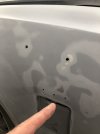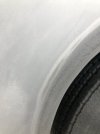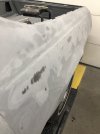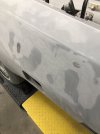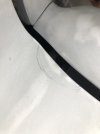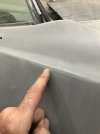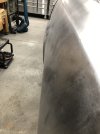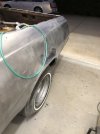Hey guys I did in again.
I sanded through to the metal…..
What I have on there now is 5 coats of epoxy primer which has been lightly sanded between coats 2&3 and again after coat 4. Then I did most of my bodywork before applying the 5th coat so I could see imperfections which there was so I corrected with more filler.
After 48 hours I applied 4 coats of high build primer and let it set for 4 days.
My problem is I keep sanding through to the metal is small areas.
Now that the car is blocked down and still needs some filling that could be fix with laying up build primer what do I do about the exposed metal ?????
Should I shoot a full coat of epoxy then the build primer????
I sanded through to the metal…..
What I have on there now is 5 coats of epoxy primer which has been lightly sanded between coats 2&3 and again after coat 4. Then I did most of my bodywork before applying the 5th coat so I could see imperfections which there was so I corrected with more filler.
After 48 hours I applied 4 coats of high build primer and let it set for 4 days.
My problem is I keep sanding through to the metal is small areas.
Now that the car is blocked down and still needs some filling that could be fix with laying up build primer what do I do about the exposed metal ?????
Should I shoot a full coat of epoxy then the build primer????

